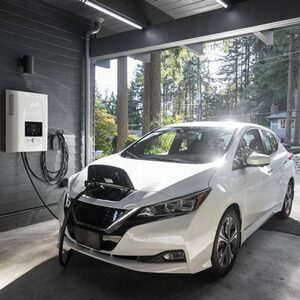

Electric cars have been around almost as long as the
automobile itself. Early limited-range models were produced as early as the
late 1800s. It was not until about 2010, though, that the major automakers
began to mass market plug-in electric vehicles. At present, the
market share of new electric cars on American roads is around 4-5%. In the future, as the
major automakers plan to increase production on electric vehicles, which should
gradually bring down their cost, what will the increase in adoption of these
plug-in vehicles entail for air quality? The answer, as detailed in a 2019 study in the journal Atmospheric Environment, depends both on the
share of electric vehicle (EV) adoption and the source of the electricity used
to charge these EVs.
Headed by Dr. Daniel Horton of Northwestern University, a research team used
computer air quality model simulations to show the impact that an increase in
EV adoption would have on air quality year-round, specifically for two
pollutants: ozone and particulate matter. In the warmer weather months, they
found that ozone levels decreased as the percent of EVs on the roads increased.
In the colder weather months, ozone levels showed a slight increase. However,
this was an increase from already much lower wintertime levels due to less
sunlight available for chemical reactions in the atmosphere, compared to summertime.
Particulate matter (also called haze) showed more variation from location to
location. The team found that the levels of this pollutant were more closely
tied to the source of the local electric supply. Areas like the Midwest, which
still relies more heavily on coal-fired power generation, showed a slight
increase in summer haze as the adoption of EVs increased. However, areas like
the Pacific Northwest or the Northeast, where a higher share of the power
supply comes from clean, renewable sources, showed a decrease in summertime
haze. Thus, while increasing adoption of plug-in electric vehicles can get the
United States part of the way on improving air quality in the future, a more
marked improvement will only come when less reliance on fossil fuels by public
utility companies is also realized.

